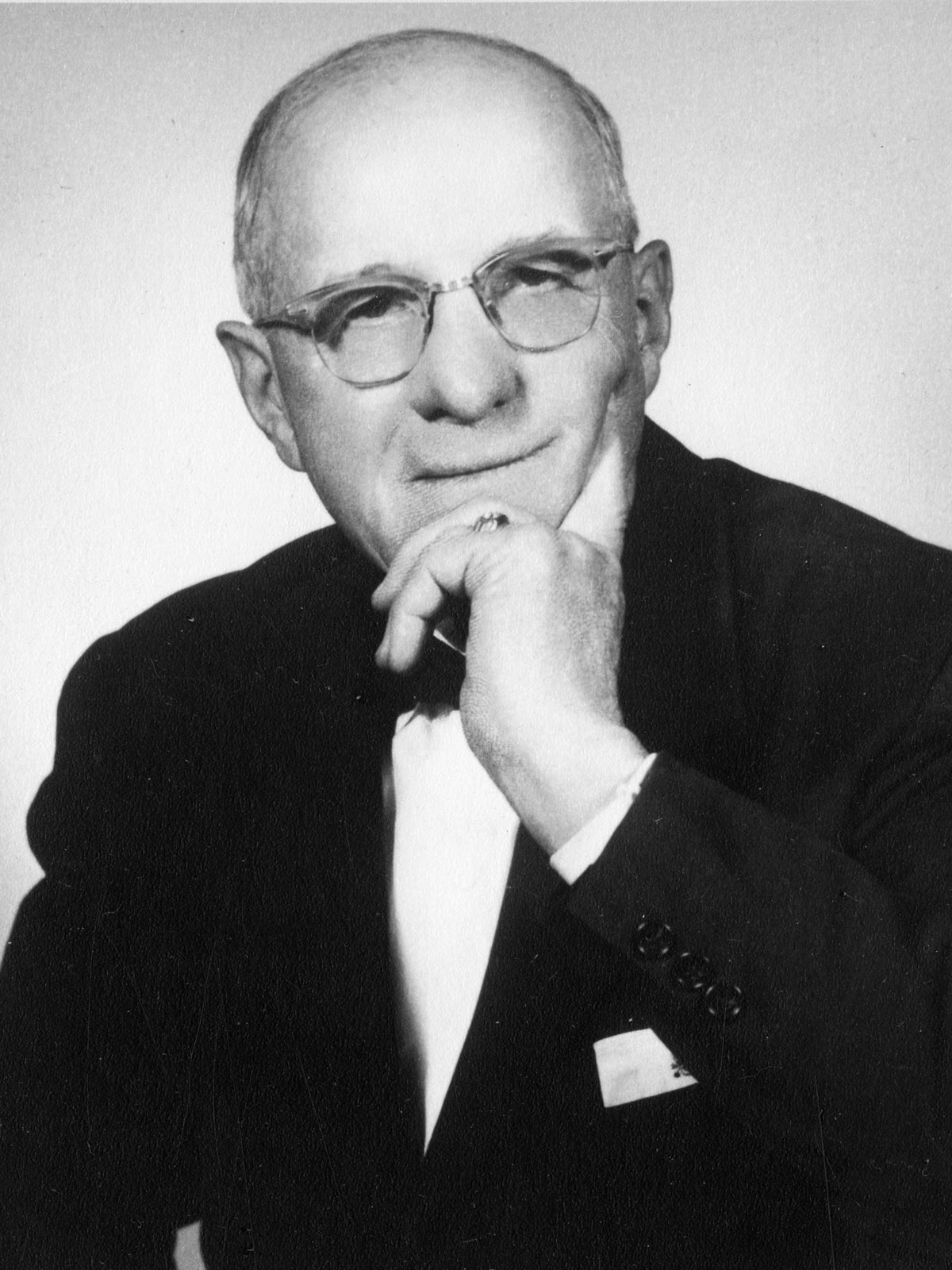
Frank Robinson was a pioneer in utilizing water resources in Platte Valley. With the assurance of dependable crop production through supplemental irrigation, Frank established superior breeding of polled Hereford cattle. Frank believed that chemical utilization effectively and permanently solves issues of agricultural surpluses has never wavered. He established the Chemurgy Project of the University of Nebraska and was an Executive Committee member from inception in 1941 until absorption by the College of Agriculture.
The pleasant task of presenting a record of Frank Robinson’s agricultural achievements and of his services to Nebraska and the Nation is complicated by the wide range of his activities. Frank L. and Emma Chase Robinson and son, Leslie, came to Kearney from Marquette, Wisconsin, in 1909, and the 46 years have been filled with pioneering in many phases of agriculture. He and son Leslie operate a farm of more than 1000 acres, 400 under irrigation, a few miles west of Kearney, where they continue to develop new farm practices.
In point of time, Frank’s pioneering in irrigation deserves first mention. He was a leader in the first use of water from the old power canal west of Kearney to irrigate the fertile acres of the Platte Valley. It must have been before 1915 that he and a few neighbors showed how feasible it is to pump water from the extensive gravel beds that underlie most of Nebraska. These were the pioneers in the continually expanding utilization of the enormous water resources of the area.
With the assurance of dependable crop production through supplemental irrigation, Frank next turned his attention to the development of better livestock to use the feed produced. In 1922 he pioneered in the breeding of superior polled Hereford cattle. Frank twice served as President of the National American Polled Hereford Association and presently is a member of its Board of Directors.
The F.L. Robinson and Son herd provided one of the top selling bulls at the National Polled Hereford sale at San Francisco last winter. Robinson cattle have been sold to breeders all over the nation and have contributed immeasurably to the improvement of the breed. The breed record price of $50,000 was paid for a bull that carried Robinson breeding.
In the early 30’s Frank turned attention to alleviation of the economic ills that beset his farmer neighbors. He found a way to reduce gasoline prices in his area by using a short truck haul from southern Kansas to center Nebraska instead of the long rail route east to Kansas City, north to Omaha and west to Kearney. He helped organize the Grand Island Production Credit Association and served as its first President. He served as a Director of the Omaha Farm Credit Board.
But Frank was not satisfied with these accomplishments on behalf of his neighbors, important as they were, and in 1935 he joined with other pioneers in the Farm Chemurgic movement. He was an active participant in the First Dearborn Conference sponsored by Henry and Edsel Ford and Francis P. Garvan, and became a member of the group that guided the program of the National Farm Chemurgic Council in the years before deaths of the sponsors resulted in its becoming a simple trade association.
Frank’s conviction that chemical utilization can effectively and permanently solve the problem of agricultural surpluses has never wavered. He was a pioneer in establishing the first organized and integrated program of research in the field, the Chemurgy Project of the University of Nebraska, and was a member of its Executive Committee from inception in 1941 until it was absorbed by the College of Agriculture.
It was this research program that assembled the data and showed the feasibility of making synthetic rubber from American farm crops. Frank was one of the group of three Nebraskans that convinced the National Congress of the necessity of this program, and was Vice President and Director of the Farms Crops Processing Corporation which built and operated at Omaha the largest of the grain alcohol plants set up in the World War II period.
This plant produced nearly 100 million gallons of critically needed alcohol for the war program, at a cost about 20 cents per gallon below the average paid other producers. It was the second largest fermentation alcohol plant in the world and the lowest cost producer. From this plant came material for tires, rocket fuel, chemicals, drugs and explosives. It was an important factor in winning the war.
Alcohol made from American farm products yielded half the enormous rubber requirement of the war period. During that time the farmers of America, in addition to feeding and clothing the Nation, produced rubber at a rate equal to the prewar world production of natural rubber.
National political events brought an end to this major chemurgic industry in 1951, but even as this is written the urgent need for chemical utilization of surplus and deteriorated crops is becoming evident to business, industrial and agricultural leaders.
Frank is active with his son Leslie in the operation of the farm and the Registered Polled Hereford business at Kearney and is a Director of the Platte Valley State Bank at Kearney. Frank and Emma Robinson are in Arizona a part of each winter looking after interests there. Leslie and Charlotte Robinson with Frank, Elizabeth and Jeanette, live on the farm and pursue the Robinson tradition of service and achievement.
Frank L. Robinson was born 13 October 1878 at Beaver Dam, Wisconsin. Mrs. Robinson, Emma M. Chase, was born at Sun Valley, Wisconsin.
